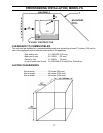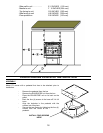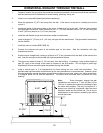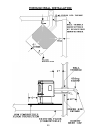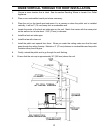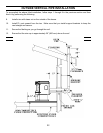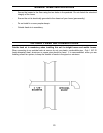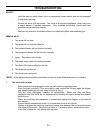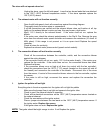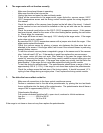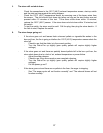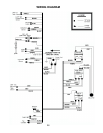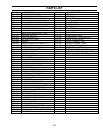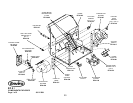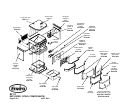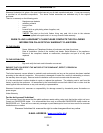6. The auger motor will not function normally
- Make sure the exhaust blower is operating.
- Make sure the dial-a-fire is turned on.
- Unplug the stove and open the side and back panels.
- Check all the connections to the auger motor, auger dial-a-fire, vacuum sensor, 200°F
(93°C) temperature sensor and the timing control module against the wiring diagram in
this manual.
- Check the condition of the vacuum hose (located on the left side of the stove). It should
not be cracked or torn and should be installed on the top air inlet tube on the vacuum
sensor.
- Check the manual reset button on the 200°F (93°C) temperature sensor. If this sensor
has been tripped, check for the cause of the over-heating before pushing the red button
in. Check auger for movement.
- If the auger still does not work, then apply 115 V directly to the auger motor. If the auger
motor does not work, replace it.
- By-pass the 200°F (93°C) temperature sensor with a jumper wire check the auger. If the
auger works replace the sensor.
- Check the vacuum sensor by placing a jumper wire between the blue wires that are
attached to the sensor. If the auger works, test to see if the exhaust blower is producing
enough firebox vacuum.
- To test the exhaust vacuum place a magnehelic gauge in the sensor end of the vacuum
tube. It should read 0.23” wc. If the reading is good then replace the vacuum sensor.
- If the auger motor still does not work, then attempt to by-pass the auger dial-a-fire
control by removing the leads from the timing control module’s second delay pins and
placing a jumper across the pins. If the auger now cycles very quickly, test the dial-a-fire
potentiometer. If the auger did not cycle then replace the timing control module.
- To test the dial-a-fire potentiometer. The potentiometer should have a range of 34K to
approximately 900 K (± 10%), if the range is not close then replace the potentiometer.
Check the voltage across the load pins of the timing module. It should be around 1-2 V,
cycling to line voltage during an auger pulse. If not, replace the timing control module.
7. The dial-a-fire has no effect on the fire
- Make sure all connections to the timer control module are secure.
- Perform a resistance test to the dial-a-fire potentiometer, by placing the two test leads
from a multimeter into the leads of the potentiometer. The potentiometer should have a
range of 34K to approximately 900 K (± 10%).
Potentiometer Readings:
Full counter-clockwise (switched off) = open circuit, overload or Infinite resistance
Low fire...................... 800 K to 900 K
High fire 34 K to 40 K
If the range is not close or does not vary then replace the potentiometer.
26



